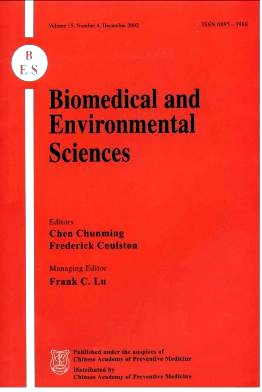Hepatotoxic Alterations Induced by Inhalation of Trichloroethylene (TCE) in Rats
-
Key words:
- alkaline phosphatase /
- reduced glutathione /
- lysosomal enzymes /
- compressed air /
- dry cleaning /
- whole body /
- used in
Abstract: Objective Trichloroethylene (TCE) is one of the most potent organic unsaturated solvents being used in dry cleaning, metal degreasing, thinner for paints varnishes and electroplating, etc. and has been reported to be a hepatotoxicant through oral and dermal exposure. However, its inhalation toxicity data is very limited in the literature due to the fact that the exposure levels associated with these effects were usually not reported. Hence, inhalation toxicity study was carried out for hepatotoxic studies. Method Inhalation toxicity studies was carried out by exposing rats to TCE for 8, 12 and 24 weeks in a dynamically operated whole body inhalation chamber. Sham treated control rats were exposed to compressed air in the inhalation chamber for the same period. Results Significant increase in liver weight (liver enlargement) appearance of necrotic lesions with fatty changes and marked necrosis were observed after longer duration (12 and 24 weeks) of TCE exposure. The lysosomal rupture resulted in increased activity of acid and alkaline phosphatase alongwith reduced glutathione content and total increased sulfhydryl content in liver tissue. Conclusion TCE exposure through Inhalation route induces hepatotoxicity in terms of marked necrosis with fatty changes and by modulating the lysosomal enzymes.
| Citation: | PRADEEP KUMAR, A.K.PRASAD, B.K.MAJI, U.MANI, K.K.DUTTA. Hepatotoxic Alterations Induced by Inhalation of Trichloroethylene (TCE) in Rats[J]. Biomedical and Environmental Sciences, 2001, 14(4): 325-332. |







 Quick Links
Quick Links
 DownLoad:
DownLoad: